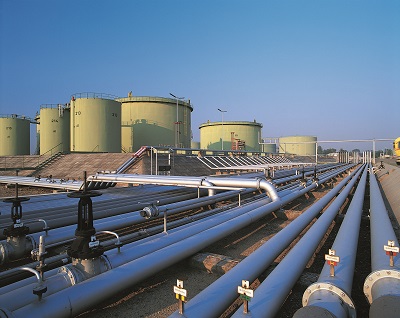
The UK government has now confirmed that it will fund front end engineering and design (FEED) studies for the Peterhead carbon capture and storage (CCS) project. The FEED work is expected to continue until 2015, and the project to be up and running by 2020.
The project is designed to capture, compress and transport by pipeline one million tonnes a year of carbon dioxide from the Aberdeenshire facility to an offshore gas reservoir for long-term storage beneath the North Sea.
The project is led by Shell, which recently signed an agreement with the UK Government to progress the scheme to the next phase of design. The project, which has strategic support from SSE - owner of the Peterhead gas power station -could represent the first industrial-scale application of CCS technology at a gas power station anywhere in the world.
"The signing of this agreement is a hugely important step towards the UK delivering the world’s first CCS demonstration facility on a gas-fired power station. The project has the potential to make gas, already the cleanest burning fossil fuel, even cleaner,” said Ed Daniels, chairman of Shell UK.
The proposed initiative at Peterhead is part of a portfolio of CCS projects supported by Shell. Others include the Quest oil sands project in Alberta, Canada, and the Gorgon project in Australia.
Another key player is Atkins, the technical advisor to the DECC CCS programme to develop and deploy full-chain CCS demonstration plants. It has provided technical and commercial advice and support to DECC throughout the negotiations of the risk-reduction-phase contracts with the two preferred bidders (White Rose and Shell).
Atkins is to provide advice and review of the engineering and designs across all technological elements of the CCS chain from the Peterhead power station, carbon capture and gas processing, transport and underground storage of the CO2. Its remit also covers the consenting process and commercial aspects of the programme delivery.
David Few, director at Atkins’ energy business, said: “This announcement follows the government’s commitment to funding the FEED study at White Rose CCS project in December last year and signals a major step forward in the commercialisation of CCS in the UK."
Meanwhile, Shell UK Ltd has awarded Technip a contract to provide front-end engineering design (FEED) for the onshore elements of the Peterhead demonstration project in Aberdeenshire, Scotland.
The FEED scope includes a grassroots carbon capture and compression plant and modifications to an existing combined cycle gas turbine power plant.
Technip's operating centre in Milton Keynes, UK, which executed a pre-FEED study for the Peterhead CCS project about 18 months ago, will execute the FEED for this next phase.
This office serves as a centre of excellence for the development of end-to-end solutions for carbon capture and sequestration projects.
Project details
The Peterhead CCS Project is part of the UK Government’s CCS Commercialisation Competition and in March 2013 was shortlisted as one of the two preferred projects bidding for funding.
The Peterhead CCS project is based on post-combustion capture and will use amines to absorb the CO2, a method that has been used by the industry for around 50 years. It is therefore a mature and cost-effective solution. It has already been demonstrated as feasible, having been deployed in several small installations in the USA and it is recognised as the best available technology for post-combustion CO2 capture.
Following feasibility studies on a variety of options, Shell proposes to build a short length of new pipeline from Peterhead Power Station and link this into the existing offshore pipeline from St Fergus to the Goldeneye reservoir, approximately 12 miles (20 KM) from shore.
CO2 will be stored in the depleted Goldeneye reservoir, which lies about 62 miles (100 KM) from the shore in the outer Moray Firth, and 2.5km beneath the seabed. The reservoir has the key geological features necessary for storing CO2 permanently: a body of high-quality porous rock overlain by impermeable rock to seal the CO2 in place.
Goldeneye was a producing gas field from 2004 to 2011. Injection is the reverse of production: during production, natural gas was drawn from the rock and naturally replaced by salt water; injection of CO2 will drive the salt water back out of the store and into the adjacent rock formations from whence it came. The Goldeneye gas store will be monitored throughout its life.
While most of the infrastructure for the project is already in place, construction is expected to create between 100 and 150 jobs. When operational, the proposed project is expected to support 20 to 30 jobs over a ten-year period.
